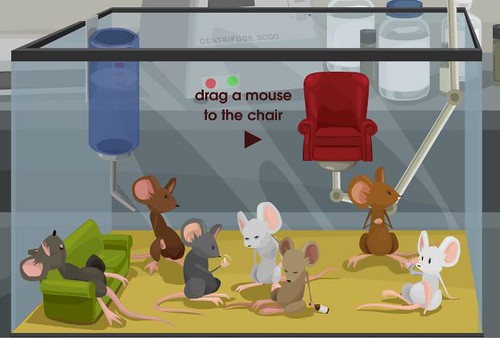tags: mouse party, drugs, drug mechanisms, illegal drugs, video game, educational tool
Now that the school year has started again, I think it is worthwhile to repeat an earlier blog entry where I linked to a really interesting interactive game, called Mouse Party. This interactive game is a great educational tool, teaching you how various legal and illegal drugs work in the brain.
Have you ever wondered how various drugs work in the brain to produce the symptoms they do? Well, this wonderful interactive website, Mouse Party, shows you the molecular details of how heroin, exstacy, alcohol, marijuana, methamphetamines, cocaine and LSD work.
Note:
The simplified mechanisms of drug action presented in the game are just a small part of the story. When drugs enter the body they elicit very complex effects in many different regions of the brain. Often they interact with many different types of neurotransmitters and may bind with a variety of receptor types in a variety of different locations. For example, THC in marijuana can bind with cannabinoid receptors located on the presynaptic and/or postsynaptic cell in a synapse.
Where applicable, this presentation primarily depicts how drugs interact with dopamine neurotransmitters because this website focuses on the brain's reward pathway. Mouse Party is designed to provide a small glimpse into the chemical interactions at the synaptic level that cause the drug user to feel 'high'.


Is the 'Note' supposed to be in blockquotes?
Aww.. That's so cute and educational! :)
It's soo cute! I love it!